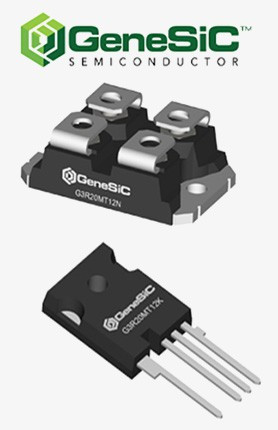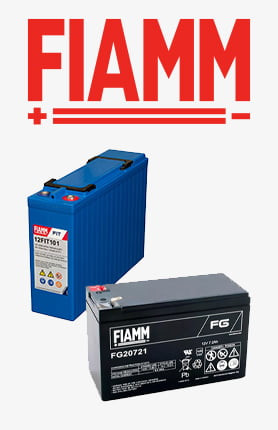Трябва да сте влезли в
-
moreX
-
Компоненти
-
-
Category
-
полупроводници
- Диоди
- Тиристори
-
Електрически изолирани модули
- Електроизолирани модули VISHAY (IR).
- Електроизолирани модули INFINEON (EUPEC).
- Електрически изолирани модули на Semikron
- Електроизолирани модули POWEREX
- Електроизолирани модули IXYS
- Електроизолирани модули от POSEICO
- Електрически изолираните модули на ABB
- Електроизолационни модули от TECHSEM
- Go to the subcategory
- Мостови токоизправители
-
Транзистори
- GeneSiC транзистори
- Mitsubishi SiC MOSFET модули
- STARPOWER SiC MOSFET модули
- ABB SiC MOSFET модули
- IGBT модули от MITSUBISHI
- Транзисторни модули MITSUBISHI
- MITSUBISHI MOSFET модули
- Транзисторни модули ABB
- IGBT модули от POWEREX
- IGBT модули - от INFINEON (EUPEC)
- Полупроводникови елементи от силициев карбид
- Go to the subcategory
- Шофьори
- Силови блокове
- Go to the subcategory
- Преобразуватели за ток и напрежение LEM
-
Пасивни компоненти (кондензатори, резистори, предпазители, филтри)
- Резистори
-
Предпазители
- Миниатюрни предпазители за електронни системи серия ABC и AGC
- Бързодействащи тръбни предпазители
- Забавени вложки с GL/GG и AM характеристики
- Изключително бързи предпазители
- Британски и американски стандартни бързодействащи предпазители
- Бързодействащи предпазители европейски стандарт
- Тягови предпазители
- Предпазители за високо напрежение
- Go to the subcategory
-
Кондензатори
- Кондензатори за двигатели
- Електролитни кондензатори
- Icel филмови кондензатори
- Силови кондензатори
- Кондензатори за постояннотокови вериги
- Кондензатори за компенсация на мощността
- Кондензатори за високо напрежение
- Кондензатори за индукционно нагряване
- Импулсни кондензатори
- DC LINK кондензатори
- Кондензатори за AC/DC вериги
- Go to the subcategory
- Филтри против смущения
- Суперкондензатори
-
Защита от пренапрежение
- Отводители за пренапрежение за радиочестотни приложения
- Отводители на пренапрежения за системи за зрение
- Отводители за пренапрежение в електропроводи
- LED предпазители от пренапрежение
- Отводители за фотоволтаици
- Отводители на пренапрежения за системи за претегляне
- Отводители за пренапрежение за fieldbus
- Go to the subcategory
- Разкриващи емисионни филтри TEMPEST
- Go to the subcategory
-
Релета и контактори
- Теория на релетата и контакторите
- AC 3-фазни твърдотелни релета
- DC твърдотелни релета
- Регулатори, системи за управление и аксесоари
- Мек старт и реверсивни контактори
- Електромеханични релета
- Контактори
- Ротационни превключватели
-
Еднофазни AC твърдотелни релета
- Еднофазни променливотокови полупроводникови релета Серия 1 | D2425 | D2450
- Еднофазни AC полупроводникови релета CWA и CWD серия
- Еднофазни AC полупроводникови релета серии CMRA и CMRD
- Еднофазни AC твърдотелни релета PS серия
- AC твърдотелни релета двойни и четворни серии D24 D, TD24 Q, H12D48 D
- Еднофазни полупроводникови релета от серия GN
- Еднофазни променливотокови твърдотелни релета серия CKR
- Монофазни AC релета за DIN шина ERDA и ERAA СЕРИЯ
- Монофазни AC релета за ток 150А
- Двойни твърдотелни релета, интегрирани с радиатор на DIN шина
- Go to the subcategory
- AC еднофазни печатни твърдотелни релета
- Интерфейсни релета
- Go to the subcategory
- Ядра и други индуктивни компоненти
- Радиатори, Варистори, Термична защита
- Фенове
- Климатик, Аксесоари за табла, Охладители
-
Батерии, зарядни устройства, буферни захранвания и преобразуватели
- Батерии, зарядни устройства - теоретично описание
- Литиево-йонни батерии. Персонализирани батерии. Система за управление на батерията (BMS)
- Батерии
- Зарядни за батерии и аксесоари
- UPS и буферни захранвания
- Конвертори и аксесоари за фотоволтаици
- Съхранение на енергия
- Водородни горивни клетки
- Литиево-йонни клетки
- Go to the subcategory
-
Автоматизация
- Подемници Spiralift
- Части за дронове Futaba
- Крайни изключватели, Микро ключове
- Сензори, Преобразуватели
- Пирометри
- Броячи, Релета за време, Панелни измервателни уреди
- Индустриална защитна екипировка
- Светлинни и звукови сигнали
- Термовизионна камера
- LED дисплеи
- Бутони и превключватели
- Go to the subcategory
-
Кабели, Litz проводници, Тръбопроводи, Гъвкави връзки
- Проводници
- Кабелни щуцери и ръкави
- лица
-
Кабели за специални приложения
- Удължителни и компенсаторни кабели
- Кабели за термодвойки
- Свързващи кабели за PT сензори
- Многожилни кабели темп. -60°C до +1400°C
- Кабели средно напрежение SILICOUL
- Кабели за запалване
- Нагревателни кабели
- Едножилни кабели темп. -60°C до +450°C
- Железопътни проводници
- Нагревателни кабели в Ex
- Кабели за отбранителната промишленост
- Go to the subcategory
- тениски
-
Плитки
- Плоски плитки
- Кръгли плитки
- Много гъвкави плитки - плоски
- Много гъвкави плитки - кръгли
- Цилиндрични медни оплетки
- Медни цилиндрични оплетки и капаци
- Гъвкави ленти за заземяване
- Цилиндрични оплетки от поцинкована и неръждаема стомана
- Медни оплетки с PVC изолация - температура до 85 градуса
- Плоски алуминиеви оплетки
- Комплект за свързване - оплетки и тръби
- Go to the subcategory
- Тягово оборудване
- Накрайници за кабели
- Изолирани гъвкави релси
- Многослойни гъвкави шини
- Системи за управление на кабели
- Go to the subcategory
- View all categories
-
полупроводници
-
-
- Suppliers
-
Applications
- CNC машини
- DC и AC задвижвания (инвертори)
- Двигатели и трансформатори
- Енергетика
- Енергийни банки
- Заваръчни машини и заварчици
- Захранвания (UPS) и токоизправителни системи
- Измерване и регулиране на температурата
- Изследвания и лабораторни измервания
- Индукционно нагряване
- Индустриална автоматизация
- Индустриална защитна екипировка
- Компоненти за зони с опасност от експлозия (EX)
- Машини за сушене и обработка на дървесина
- Машини за термоформоване на пластмаси
- Минно дело, металургия и леярство
- Оборудване за разпределителни и контролни шкафове
- ОВК автоматизация
- Печат
- Трамвайна и железопътна тяга
-
Инсталация
-
-
Индуктори
-
-
Индукционни устройства
-
-
Обслужване
-
- Contact
- Zobacz wszystkie kategorie
Basics of Electromagnetic Compatibility: What Is It and Why Is It Important? 8 of 8

Basics of Electromagnetic Compatibility: What Is It and Why Is It Important? 8 of 8
Electromagnetic Compatibility (EMC) plays a crucial role in today's world of technology.
With increasing complexity and the growing number of electronic devices, the need to ensure the harmonious functioning and coexistence of these devices becomes more and more important. Hence, it is essential to emphasize the significance of Electromagnetic Compatibility. Here are a few key aspects that highlight its importance:
Safety: EMC plays a crucial role in ensuring user safety. Electromagnetic interference can affect the operation of other electronic devices, including those vital to our daily existence, such as medical, automotive, or aviation systems. Ensuring proper Electromagnetic Compatibility helps minimize the risk of interference and ensures safety in using these devices.
Fault-Free Operation: Electronic devices are increasingly sensitive to electromagnetic interference. Malfunctioning and failures of these devices can lead to serious consequences, such as data loss, power supply interruptions, or life-threatening events. Proper Electromagnetic Compatibility minimizes the risk of failures and ensures reliable device operation.
Compliance with Standards and Regulations: Many countries and regions establish norms and regulations concerning Electromagnetic Compatibility. Adhering to these norms and regulations is essential for introducing devices to the market. Non-compliance with EMC requirements can lead to legal and financial issues for device manufacturers.
Minimizing Interference: Electromagnetic interference can negatively impact other devices in their vicinity, leading to operational issues and communication disruptions. By ensuring Electromagnetic Compatibility, we minimize electromagnetic interference and create an environment where devices can freely cooperate and communicate.
Long-term Performance: Electronic devices that comply with EMC requirements have a greater chance of long-term performance. Minimizing the impact of electromagnetic interference on these devices allows them to maintain their efficiency over time, which is particularly crucial for critical systems and infrastructure.
Emphasizing the importance of Electromagnetic Compatibility is crucial to ensuring the safety, reliability, compliance with regulations, and optimal performance of electronic devices. By appropriately designing, testing, and implementing strategies to manage electromagnetic interferences, we create an environment where devices can effectively collaborate and meet the demands of modern technological challenges.
Electromagnetic Compatibility (EMC) is a field of science and technology that deals with ensuring the harmonious functioning of electronic devices in the presence of electromagnetic interferences.
To summarize the key concepts and principles related to EMC, the following issues are worth emphasizing:
Definition of EMC: Electromagnetic Compatibility refers to the ability of electronic devices to coexist in an electromagnetic environment without mutual interference, loss of functionality, or harmful effects on other devices or the surroundings.
Electromagnetic Emission (EMI): Emission refers to the undesired release of electromagnetic waves by electronic devices. Proper design, shielding, and circuit layout help limit EMI emissions, minimizing the device's impact on others in its environment.
Electromagnetic Immunity (EMC): Immunity refers to the device's ability to operate correctly in the presence of electromagnetic interferences. Adequate design, the application of filters, and shielding help increase resistance to EMI interferences.
EMC Standards and Regulations: There are many norms and regulations related to Electromagnetic Compatibility adopted at national, regional, and international levels. Compliance with these norms is necessary for introducing devices to the market and ensuring EMC requirements are met.
Design and Shielding: Properly designing electronic devices from the outset, considering EMC principles, is crucial for minimizing electromagnetic interferences. Applying shielding in the form of shielded enclosures, cable shielding, and printed circuit boards helps reduce emissions and increase immunity to interferences.
Testing and Verification: Conducting tests for electromagnetic emissions and immunity is essential in the process of ensuring compliance with EMC standards. These tests allow the identification of potential issues and the implementation of necessary modifications to meet EMC requirements.
In summary, Electromagnetic Compatibility (EMC) is crucial for ensuring the harmonious functioning of electronic devices in an electromagnetic environment. Electromagnetic emission, electromagnetic immunity, compliance with standards, design, shielding, testing, and verification are key concepts and principles related to EMC. Proper understanding and application of these concepts contribute to minimizing electromagnetic interferences and ensuring the reliable operation of electronic devices in today's technological environments.
The future perspective of Electromagnetic Compatibility (EMC) is highly promising as technological advancements and the increasing number of electronic devices make EMC issues increasingly significant.
Below are a few areas that are critical for the future development of EMC:
Internet of Things (IoT): The dynamic growth in the number of devices connected to the Internet, forming the Internet of Things, brings new EMC challenges. The increasing number of IoT devices with various functions and applications requires the implementation of appropriate strategies for managing electromagnetic interferences to minimize the risk of interference and ensure safe cooperation between them.
Electric and Autonomous Vehicles: The shift to electric vehicles and the development of autonomous vehicle technology are other areas where EMC plays a crucial role. Electric drive systems and sophisticated electronic and communication systems in vehicles require Electromagnetic Compatibility to avoid electromagnetic interferences and ensure the safe and reliable operation of these vehicles.
Medical and Healthcare: The medical and healthcare sectors have a growing demand for electronic devices such as diagnostic apparatus, patient monitoring systems, or medical devices. In these areas, EMC is of utmost importance as any electromagnetic interferences can negatively impact diagnostic accuracy, the operation of medical devices, and patient safety.
Renewable Energy: The role of renewable energy is increasing in our society. The growing number of solar panels, wind turbines, and other renewable energy installations requires adequate EMC solutions. Efficient management of electromagnetic interferences is essential for the proper functioning and performance of these energy systems.
Industry 4.0: The concept of Industry 4.0 involves increasing digitization, automation, and communication between devices. Introducing new technologies such as artificial intelligence, robotics, or the Internet of Things requires proper management of electromagnetic interferences to ensure the safe, reliable, and efficient operation of these systems.
The future perspective and development of EMC are inherently linked to technological advancements and societal progress. As technology becomes increasingly advanced and diverse, challenges related to electromagnetic interferences will also evolve. However, through appropriate management strategies, innovations in design, testing, and compliance with EMC standards, we can create more compatible, safer, and more efficient environments for electronic devices in the future.
Related posts
 Now available – DC/DC converters from PREMIUM
Now available – DC/DC converters from PREMIUM
 New release in DACPOL lighting for lathes – Kira covers
New release in DACPOL lighting for lathes – Kira covers




Leave a comment